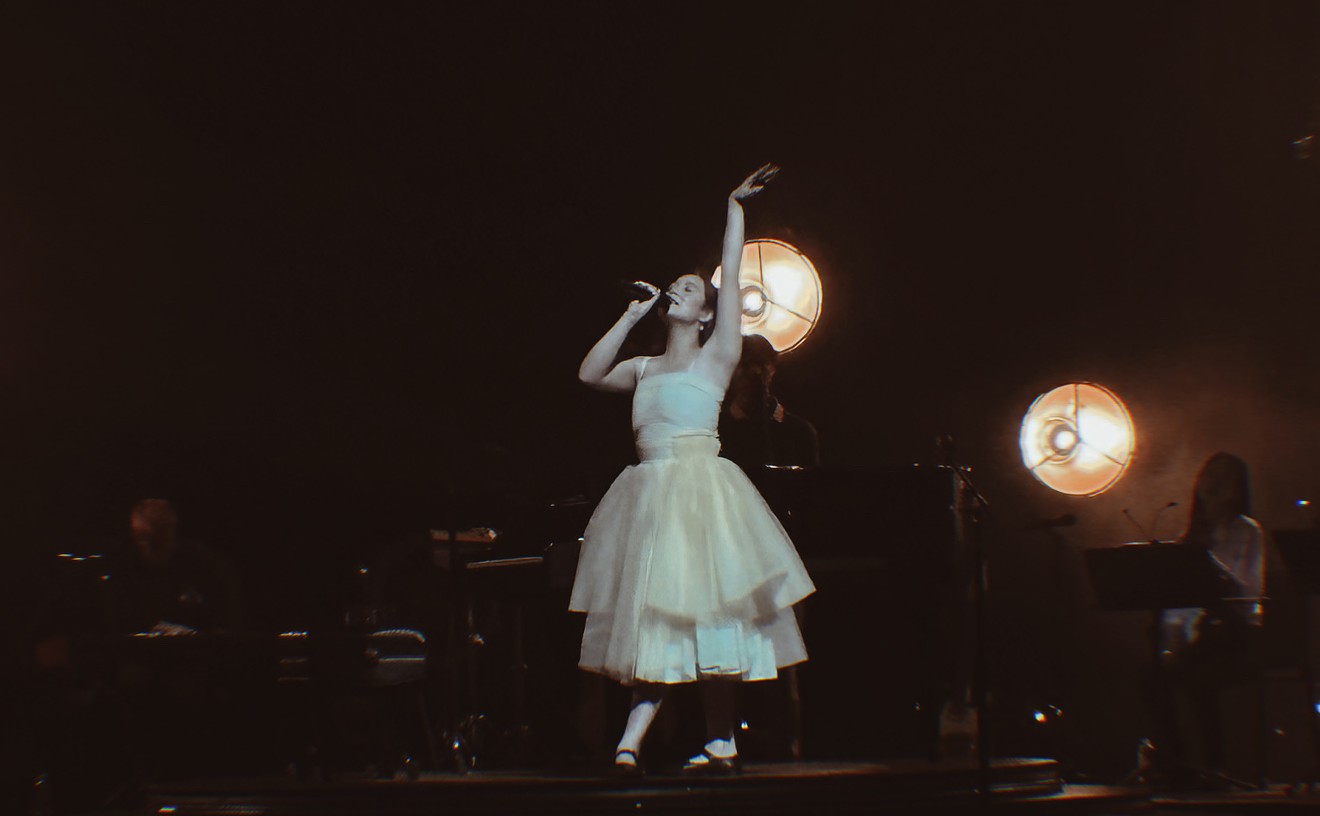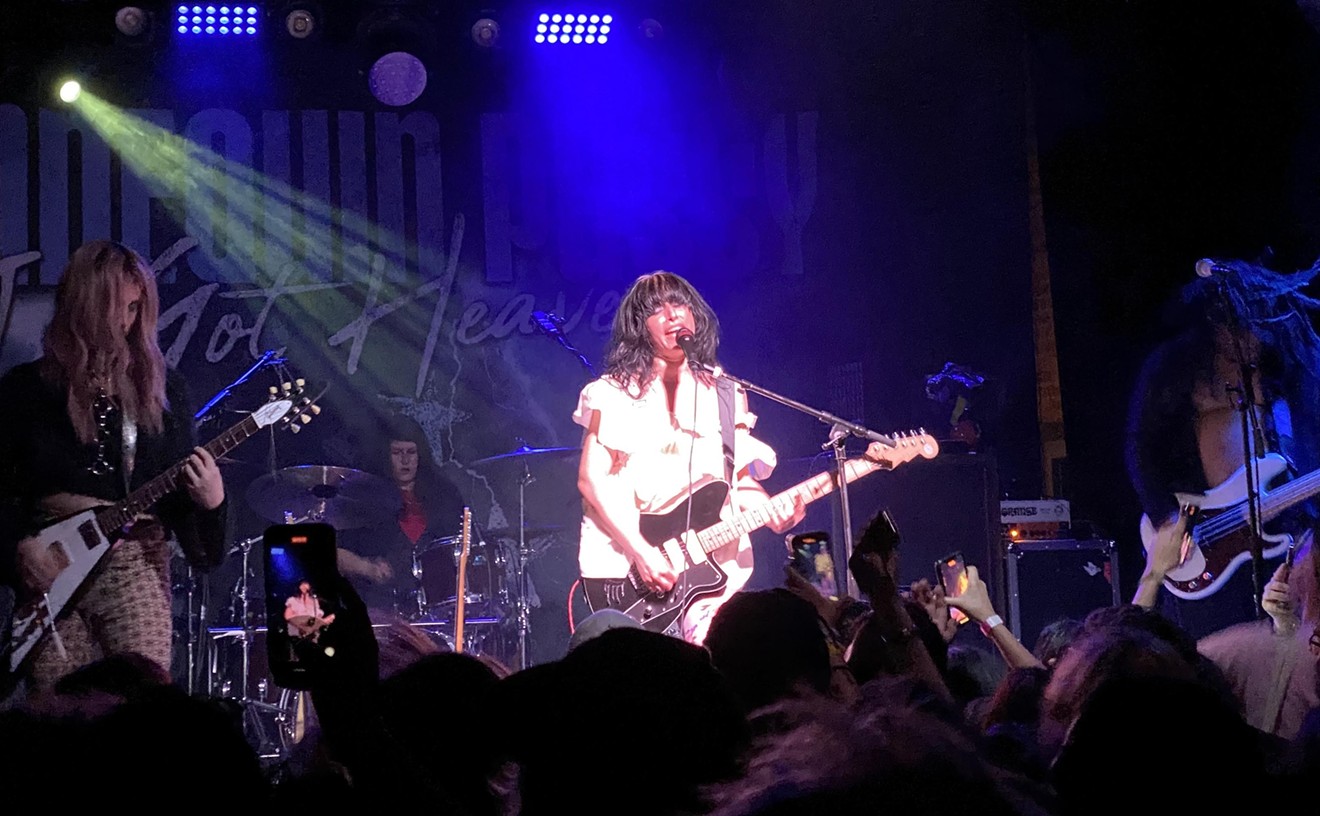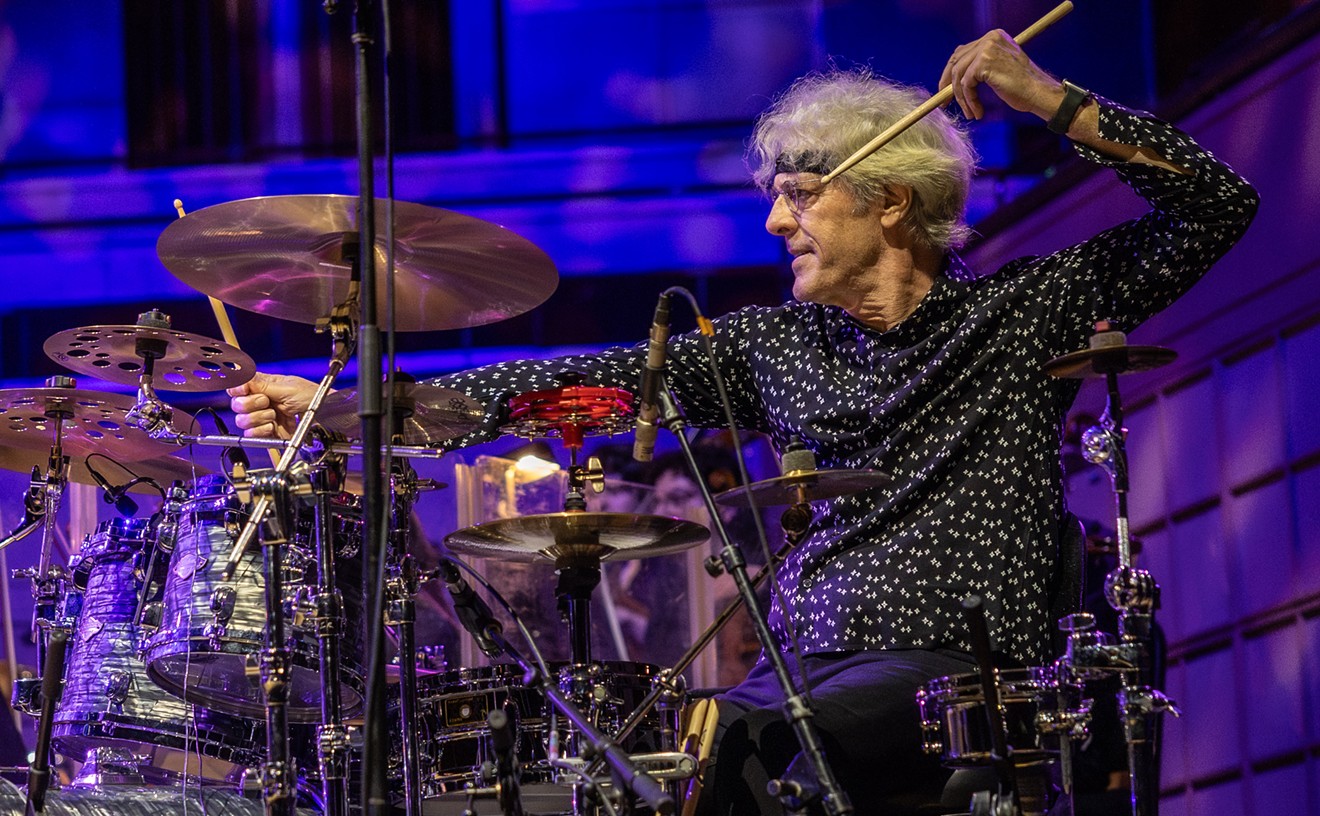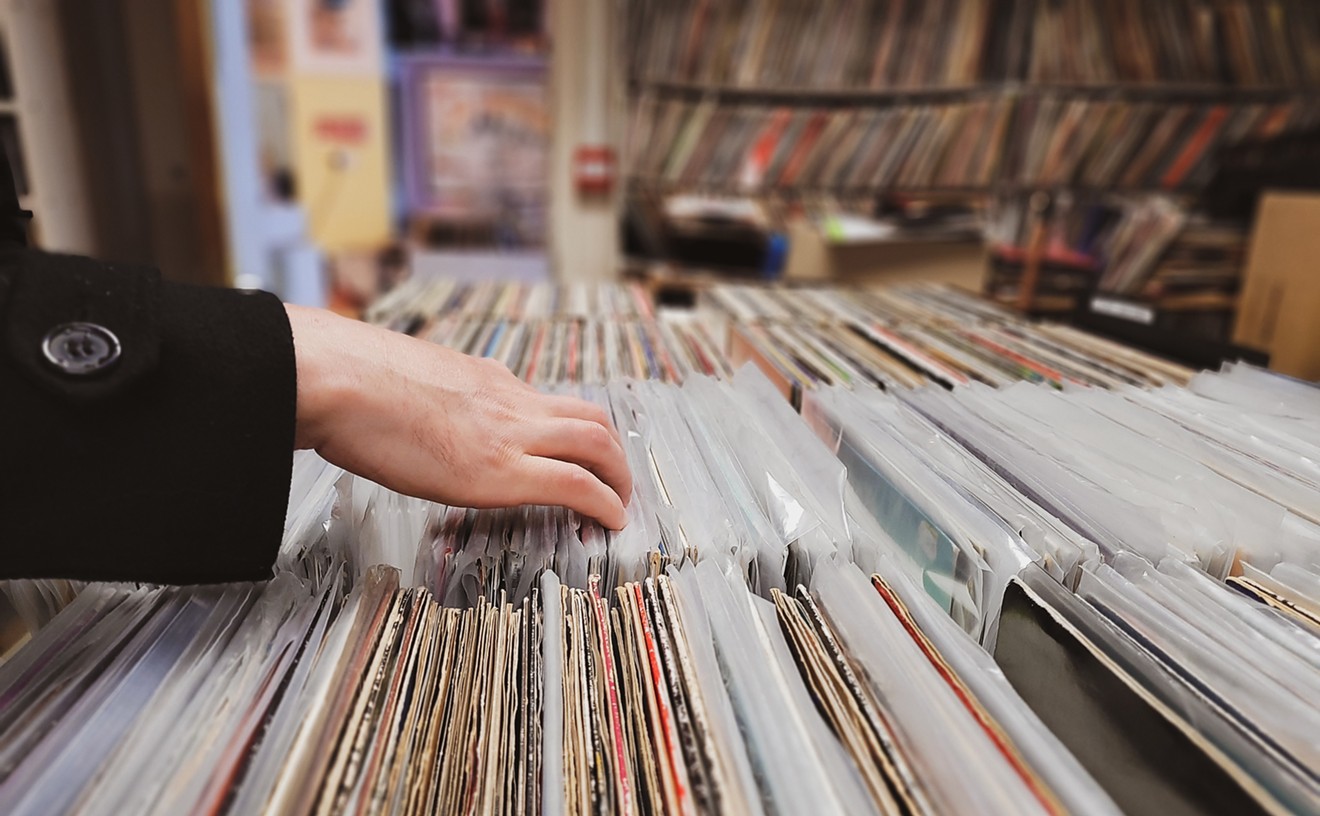It may be one of the most important landmarks in blues music, but 508 Park Ave., just down the street from Dallas City Hall, is in shambles. What once was a stately building where blues legend Robert Johnson famously recorded on June 19 and 20, 1937, now has boards on the windows and trash gathering outside the door. The street in front is full of homeless people, lying on the curb or just passing through.
I'm waiting on local blues veteran Jim Suhler, who in the next two hours will take me on a blues tour of Dallas. Suhler arrives minutes later and, despite having seen the building hundreds of times, he looks slightly perplexed at how the neighborhood has changed, but still he seems in awe.
For nearly 20 years, Suhler has been a fixture of the Dallas blues scene, performing with his band Monkey Beat when he's not on the road as George Thorogood's guitar player. For a few years in the mid-aughts, he even served as part-owner of Deep Ellum Blues, a Deep Ellum club that showcased local and national blues acts. I knew he was more than knowledgeable about Dallas blues history, but Suhler modestly doesn't even consider himself a true blues player since he plays a more up-tempo, rock-and-roll style of the genre. His passion for the blues, however, and his résumé, suggest otherwise.
So, I asked him to show me some landmarks of the forgotten blues around town. Our first stop is 508 Park Ave. As the building ages, the spirit of the blues continues to evolve. It's less a genre and more of a feeling that can be found anywhere from old-school "gut-bucket blues," as Suhler calls it, to modern-day punk rock.
"I don't know what they should do with it," Suhler says of the boarded-up 508 Park. "It could be an international mecca like Sun [Studio] is in Memphis."
Instead, it's spent the last few years in purgatory until earlier this year when First Presbyterian Church of Dallas purchased the building, promising to restore it, complete with a proper recording studio.
In the meantime, it sits dormant across the street from The Stewpot, First Presbyterian's soup kitchen, as stragglers loiter in the street out front, waiting for their next meal.
On the surface, much has changed, but in a strange way, even with all the homeless wandering around outside, the spirit of the place remains. Suhler tells me how record labels operated during the time Robert Johnson recorded at 508 Park: The label would send a train ticket and some traveling money to an artist. The artist would show up, record as many songs as possible in a day or two, and then they would have to find their own way home.
You can see a similar essence in the vagrants lying on the curb or aimlessly passing through the alley. They got there by train or by bus, but don't know where they're going next. "There's something fitting about it," Suhler says.
Of all the places associated with blues in Dallas, he says "it's the most recognized and the most infamous."
The opposite was true of our next stop.
Sparkman Hillcrest Memorial Park Cemetery, the century-old resting place of Tom Landry and Mary Kay Ash, also holds the remains of Mickey Mantle, and only a baseball throw away from his gravesite in the cemetery's mausoleum lies Dallas blues legend Freddie King, "The Texas Cannonball."
King, known for his high-energy, electric-guitar blues licks, saw his influence reach all the way to the United Kingdom, where he was embraced most notably by Eric Clapton.
"Clapton recorded with him, so he was consequently playing all those rock festivals," Suhler says. "Freddie played with Clapton a lot, and when they were both in town, they'd go see Bugs Henderson."
While King's history is widely known, not many people know he is buried here, including the employee who is guiding Suhler and me through the cemetery. "Freddie King is out here at Sparkman Hillcrest," he says to himself, astonished. Our guide, a middle-aged African-American gentleman, says he was a fan of King as a child. For him, the blues played a pivotal roll in his upbringing.
"It was a cultural necessity," he says.
I ask him what he means.
"So I could connect with my mom and dad, and so they can connect with their family," he explains. "If we didn't have music to connect with, we'd kind of be lost."
Suhler explains that many white teenagers use music as a way to rebel against their parents. Our guide found the notion strange. "How interesting that you think music is a cultural disconnect between you and your parents."
But rebellion is how many young white teens stumbled across blues music in the '60s and '70s. "This was dangerous music at the time," Suhler says.
He goes on to tell a story about how B.B. King was commonly booed by black audiences. White audiences, however, embraced King, most notably at a performance at San Francisco's Fillmore West in 1968. It was a sign of things to come.
"Things got co-opted and gentrified," Suhler says. "[Memphis'] Beale Street [has become] the Disneyland of blues."
Something similar occurred in the State-Thomas neighborhood, our final stop. The ritzy apartments and clean streets that make up the neighborhood now were once crowded and scary. In its heyday, it housed the Tip Top Club, a popular venue on the Chitlin' Circuit, a network of predominantly black venues all over the United States where blues music was played.
Suhler was still young when the gentrification of the neighborhood began. "I remember driving by these places as a child," he says. "Obviously I wouldn't go in them."
Nowadays, most Dallas residents don't know about the blues hotbed that once occupied Dallas, but the forgotten history that surrounds this location and the others on our tour have had a significant impact on Suhler. For most of his life, he's given himself over to the genre and has seen it evolve even further. He mentions that the late punk artist Frankie 45 was inspired to pick up the guitar after seeing him perform. "There's a lot of similarities between what he was doing and the gut-bucket blues," he says. Suhler goes on to tell the story of losing his daughter in a car wreck nine years ago. He wishes he could have had more time with her.
"You decide to do it and you give up a lot," he offers. "I can't even keep a girlfriend 'cause I'm gone all the time."
It's the perfect recipe for the blues — even for a guy who doesn't claim to be a true blues artist.
"There are blues nazis, and I'm not one of them," Suhler says. "The music is alive. The blues isn't for me to decide."










